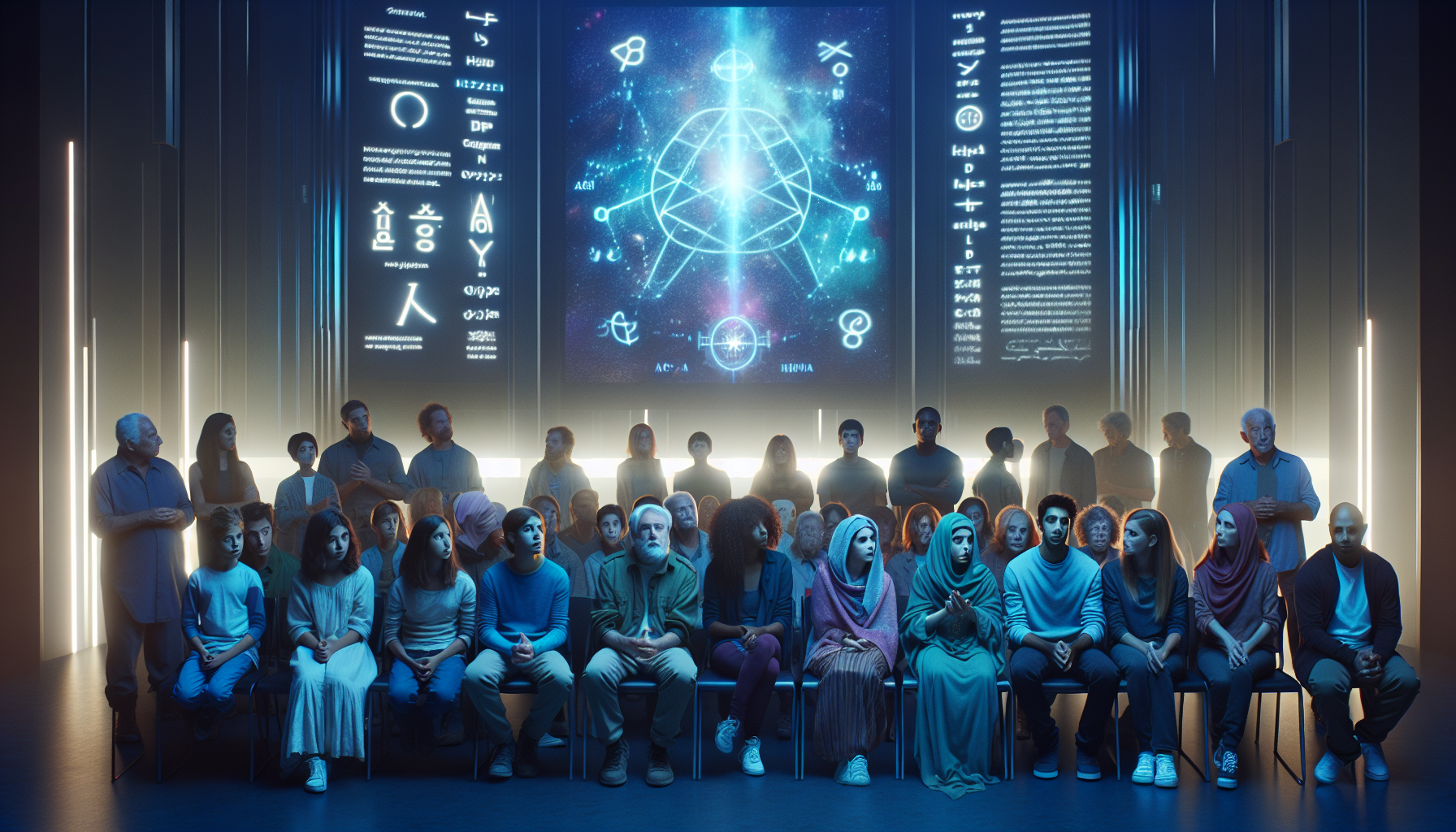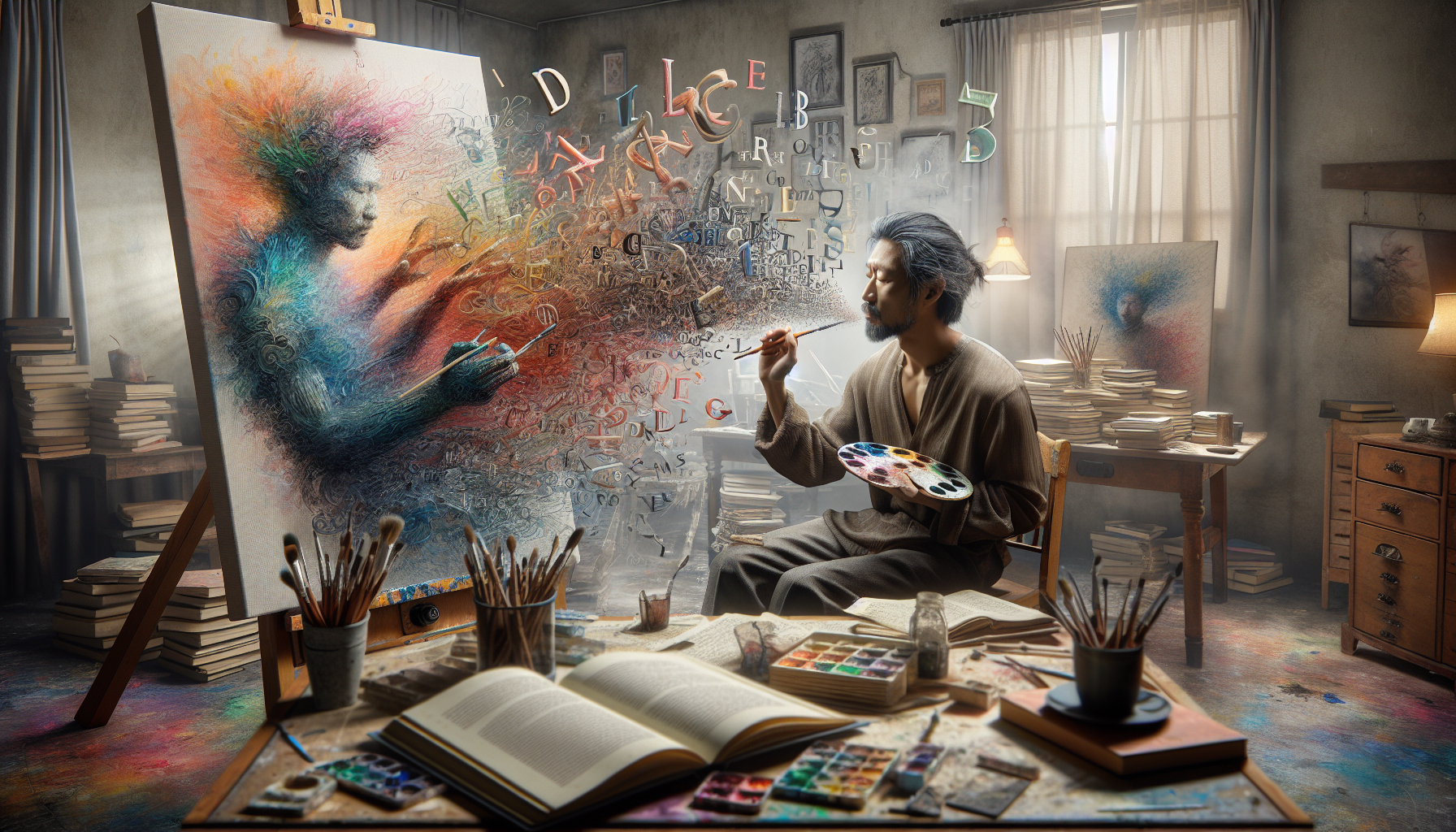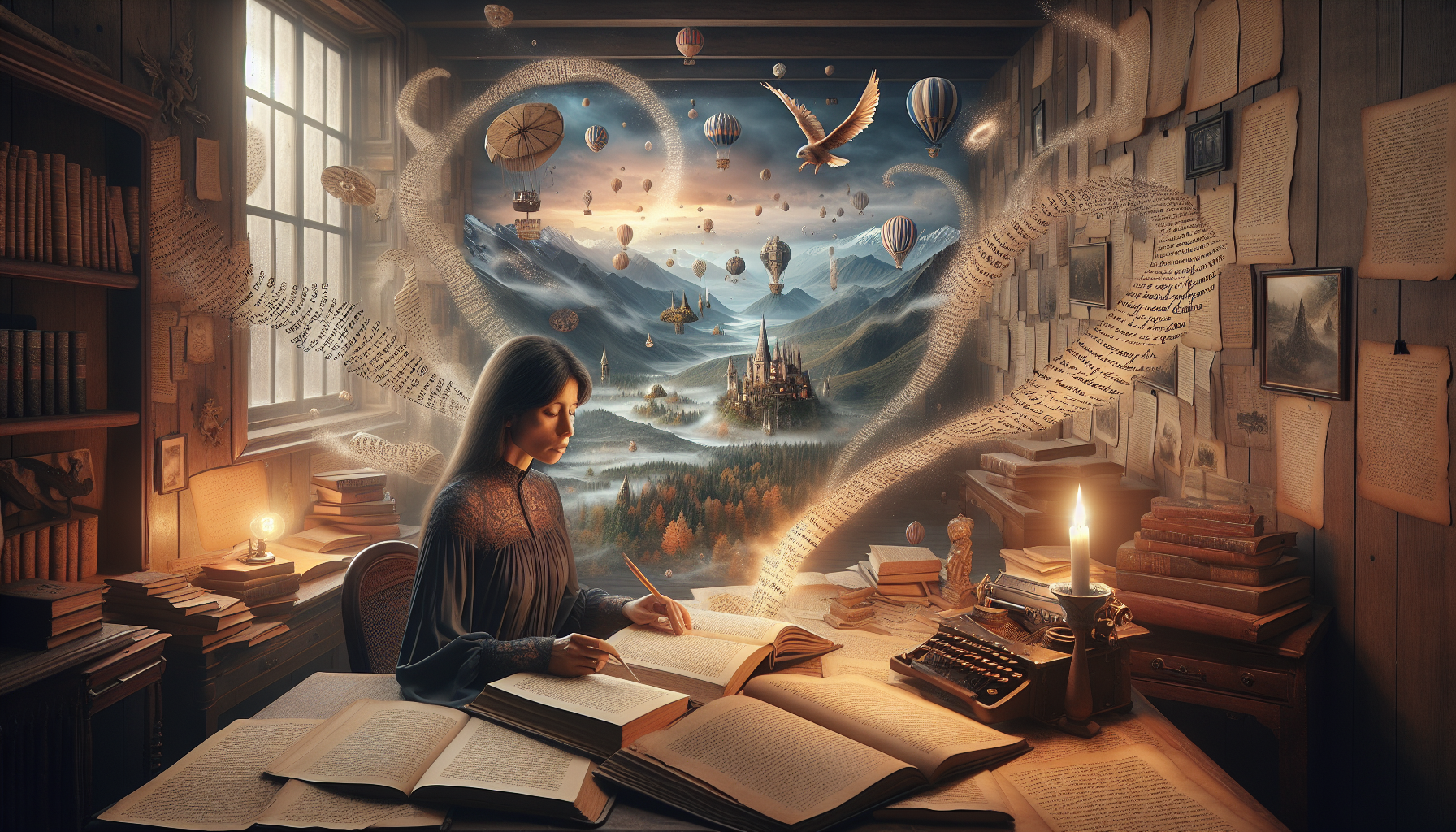In a world where imagination knows no bounds, the allure of invented languages has become an undeniable force in pop culture, captivating audiences across the globe. From the intricate Elvish tongues of Tolkien’s Middle-earth to the harsh, guttural sounds of Dothraki in “Game of Thrones,” these constructed languages, or conlangs, have transcended their fictional origins to become cultural phenomena in their own right. But what is it about these artfully crafted languages that resonates so deeply with us? 🤔 Why do we find ourselves entranced by their melodic syllables and peculiar grammar? In this exploration of “Language of the Stars,” we delve into the enchanting world of invented languages and uncover how they are reshaping the landscape of modern storytelling, engaging fans in ways never before imagined.
The journey begins by examining the roots of this linguistic creativity, tracing the lineage of conlangs from their literary and cinematic beginnings to their profound impact on contemporary pop culture. Pioneers like J.R.R. Tolkien not only created rich narratives but also designed languages that added depth and authenticity to their fictional worlds. Today, this tradition continues as creators and linguists collaborate to develop languages that are more than mere tools for storytelling—they become living, breathing entities that fans passionately embrace and even learn. 🌟 As we navigate this linguistic tapestry, we’ll explore the stories behind some of the most iconic conlangs, revealing the meticulous craftsmanship involved in their creation and the passionate communities that sustain them.
But the influence of invented languages extends far beyond the confines of books and screens. They have permeated music, art, and even academic fields, inspiring enthusiasts to pursue the study of language construction as both a hobby and a discipline. Throughout this article, we will delve into the multifaceted roles these languages play in pop culture, from enhancing narrative immersion to fostering global fan communities. Whether you are a seasoned conlanger, a curious linguaphile, or a pop culture aficionado, prepare to be immersed in a world where language itself becomes a form of art, capable of uniting us across cultures and sparking the imagination in ways that words alone could never do. Welcome to the captivating realm where the stars align through the power of invented languages. ✨
The Rise of Constructed Languages in Popular Culture
Constructed languages, often referred to as conlangs, have become a fascinating and integral part of popular culture. From the intricate syntax of Klingon in the “Star Trek” universe to the lyrical beauty of Elvish in J.R.R. Tolkien’s Middle-earth, these languages have captured the imaginations of audiences worldwide. But what exactly are constructed languages, and why have they gained such popularity?
Constructed languages are languages that have been intentionally created rather than having naturally evolved. While some might see them as mere fictional tools, they often carry the weight of real linguistic complexity and cultural depth. Conlangs are not just a collection of random sounds or words; they are crafted with specific phonetic, grammatical, and syntactic rules that mirror the intricacies of natural languages.
One of the reasons conlangs have gained such traction in popular culture is their ability to enrich fictional worlds, making them feel more immersive and authentic. When a conlang is introduced into a narrative, it signals to the audience that the creators have invested thought and effort into the world-building process. This attention to detail can transform a simple story into a complex tapestry, inviting audiences to explore deeper layers of meaning and connection within the fictional world.
For a deeper understanding of the impact of constructed languages in pop culture, consider watching this insightful video: The Art of Language Invention | TEDx Talks by David J. Peterson.
The Linguistic Artistry Behind Conlangs
The creation of a constructed language is a meticulous process that requires a deep understanding of linguistics. Inventors of conlangs often start by defining the language’s phonetic inventory, determining which sounds will exist in the language and how they will be pronounced. This is akin to selecting a palette of colors before painting a masterpiece, as each sound can convey different nuances of meaning and emotion.
Next, the grammatical structure is established. This involves setting rules for word order, verb conjugations, and sentence construction. A well-constructed language will have a consistent and logical grammar system, allowing speakers to express complex ideas and concepts clearly and effectively. This process is similar to constructing the framework of a building, providing the necessary support for the language to thrive.
The vocabulary is then developed, often drawing inspiration from existing languages or cultural elements within the fictional world. For instance, the Dothraki language in “Game of Thrones” has a rich vocabulary that reflects the nomadic and warrior culture of its speakers. Each word is carefully chosen to reflect the values, beliefs, and daily experiences of the characters who speak it.
Comparative Table: Notable Constructed Languages
| Language | Universe | Creator | Notable Features |
|---|---|---|---|
| Klingon | Star Trek | Marc Okrand | Aggressive phonetics, warrior-centric vocabulary |
| Elvish (Sindarin & Quenya) | Middle-earth | J.R.R. Tolkien | Rich phonetic beauty, extensive historical context |
| Dothraki | Game of Thrones | David J. Peterson | Nomadic culture reflections, practical usage |
| Na’vi | Avatar | Paul Frommer | Harmony with nature, complex syntax |
Explore the table above to see how different constructed languages compare in terms of their unique features and creators. Each language brings a distinct flavor and depth to its respective universe, showcasing the linguistic artistry involved in their creation.
The Role of Conlangs in Storytelling
Constructed languages play a crucial role in storytelling, enhancing the narrative by adding layers of cultural and emotional depth. When characters speak in a conlang, it can convey their identity, heritage, and emotional state, often in ways that transcend conventional dialogue. This is particularly evident in the “Lord of the Rings” series, where the use of Elvish adds a sense of ancient wisdom and mystique to the elves, differentiating them from other races.
Conlangs also serve as a powerful tool for world-building. By creating a unique linguistic landscape, authors and filmmakers can craft worlds that feel lived-in and believable. The language becomes a bridge between the audience and the fictional world, allowing them to immerse themselves more fully in the narrative. This immersive experience is further enhanced when conlangs are used consistently across different media platforms, such as books, movies, and video games.
Moreover, constructed languages can act as a storytelling device, driving plot development and character interaction. In “Star Trek,” for example, the Klingon language is used to highlight cultural tensions and misunderstandings between the Klingon Empire and the Federation. This linguistic barrier creates dramatic tension and opportunities for character growth and conflict resolution.
- Conlangs enrich fictional worlds, making them more immersive.
- They enhance storytelling by conveying identity and emotion.
- Conlangs serve as a bridge between audiences and fictional narratives.
Constructed languages are not just a passing trend; they are a testament to the creativity and dedication of their creators. As audiences continue to seek deeper engagement with fictional worlds, conlangs will undoubtedly remain a vital component of storytelling in popular culture.
The Community and Learning of Conlangs
The fascination with constructed languages has fostered vibrant communities of enthusiasts and learners worldwide. These communities often gather online to share resources, learn from each other, and celebrate their passion for conlangs. Platforms such as Reddit and Discord host numerous language-specific forums where members can discuss grammar, practice speaking, and even participate in collaborative language creation projects.
Learning a conlang can be an enriching experience, offering insights into the art of language construction and providing a deeper appreciation for linguistic diversity. Many language creators provide resources for learners, including dictionaries, grammar guides, and pronunciation tutorials. Fans of “Game of Thrones,” for example, can access a wealth of Dothraki learning materials created by David J. Peterson, the language’s inventor.
Furthermore, the rise of conlangs has sparked academic interest in the field of linguistics. Scholars and students alike study these languages to explore themes of language evolution, cultural expression, and cognitive processes. Conlangs offer a unique opportunity to examine language from a fresh perspective, challenging conventional notions of what constitutes a “real” language.
If you’re interested in diving deeper into the world of constructed languages, consider joining a community or taking a course to learn your favorite conlang. Not only will you gain a new linguistic skill, but you’ll also connect with a community of like-minded individuals who share your passion for language and creativity.
With the rise of technology and digital media, the future of conlangs looks promising. These languages will continue to shape pop culture, offering audiences new ways to engage with stories and each other. Whether you’re a fan, a learner, or a creator, the world of constructed languages is vast and full of possibilities.

Conclusion
**Conclusion: Language of the Stars: How Invented Languages are Shaping Pop Culture and Captivating Audiences Everywhere**
As we conclude our exploration of invented languages and their profound influence on pop culture, it is crucial to revisit the significant points that underscore this captivating phenomenon. Our journey through the linguistic landscapes of fictional worlds has illuminated the creativity, dedication, and cultural impact of constructed languages, or conlangs, and their creators.
Throughout this article, we delved into the origins and evolution of some of the most iconic conlangs, such as Tolkien’s Elvish, Klingon from “Star Trek,” and Dothraki from “Game of Thrones.” These languages, crafted with meticulous attention to detail, have transcended their fictional origins to become integral components of the cultural zeitgeist. The meticulous construction of phonetics, grammar, and vocabulary in these languages exemplifies the intersection of art and science, showcasing the incredible dedication of their creators to authenticity and immersion.
One of the most compelling aspects of invented languages is their ability to enhance storytelling and world-building. By providing linguistic depth, these languages enrich narratives, offering audiences a more immersive experience. They allow for the creation of complex societies with distinct cultures and histories, enabling fans to connect with fictional worlds on a profound level. This connection is further strengthened by the communities that form around learning and using these languages, fostering a sense of belonging and shared passion among enthusiasts.
The cultural impact of conlangs extends beyond entertainment. These languages have permeated academic circles, inspiring linguistic research and analysis. They challenge our understanding of language structure and evolution, pushing the boundaries of linguistic theory. Furthermore, they serve as a testament to the power of human creativity and the limitless potential of language as a tool for expression and connection.
In our digital age, invented languages have found new platforms for growth and dissemination. The internet and social media have facilitated the expansion of fan communities, enabling enthusiasts from around the world to learn, teach, and communicate in these languages. This global connectivity has amplified their reach and influence, embedding them further into the fabric of popular culture.
The significance of invented languages in pop culture is undeniable. They have become symbols of fandom, creativity, and intellectual curiosity. They challenge us to think differently about language and its role in our lives, encouraging us to embrace diversity and innovation. In a world where communication is paramount, these languages remind us of the beauty and complexity inherent in human expression.
As we reflect on the journey we’ve taken, it becomes clear that invented languages are more than mere tools of fiction; they are bridges connecting us to fantastical worlds and to each other. They inspire us to imagine, to create, and to explore the boundaries of language and culture.
In closing, we invite you to continue this conversation. Whether you’re a seasoned conlang enthusiast or a curious newcomer, your insights and experiences enrich the tapestry of this fascinating subject. Share this article with fellow language lovers and pop culture aficionados. Engage in discussions that celebrate the art of conlangs and their impact on our world.
Let us celebrate the ingenuity of these linguistic creations and the vibrant communities they inspire. 🌟 Dive into the world of conlangs, learn a new word, join a fan group, or even attempt to create your own language. The possibilities are endless, and the journey is as rewarding as the destination.
Thank you for joining us on this exploration of the Language of the Stars. May your linguistic adventures continue to inspire and captivate, just as these invented languages have done for audiences worldwide. 🚀
For further reading and exploration, consider visiting some reliable sources on conlangs and their cultural impact:
1. Conlang.org – A comprehensive resource on constructed languages, offering insights, articles, and community forums.
2. David J. Peterson’s Blog – The linguist behind Dothraki and High Valyrian shares insights into the art of language creation.
3. Linguistic Society of America – Explore the academic side of linguistics and the study of constructed languages.
Thank you for your engagement and curiosity. We look forward to seeing how the language of the stars continues to shape and captivate us all.
Toni Santos is a visual cryptographer and artisan, weaving hidden meaning into every line, curve, and composition. His creations delve into the mysterious world of secret codes, symbolic alphabets, and invented languages, transforming visual art into a rich tapestry of communication beyond words.
Guided by a lifelong fascination with hidden knowledge and the power of symbols, Toni explores how meaning can be embedded, concealed, and rediscovered. From constructed glyphs to encoded illustrations, each piece he creates serves as a portal to a deeper layer of understanding — one that invites curiosity, interpretation, and wonder. His work bridges the intuitive with the intellectual, the mystical with the methodical.
With roots in handcrafted artistry and a background in visual semiotics, Toni fuses form and function to create works that whisper rather than shout. These are not just images — they are visual riddles, poetic encryptions, and artifacts of a language yet to be spoken.
As the creative mind behind Vizovex, Toni offers a space where art meets encryption, and viewers are invited to decode, reflect, and engage. Through symbolic design, visual lexicons, and explorations into constructed languages, he builds a universe where meaning is layered, intentional, and always slightly out of reach — waiting to be discovered.
His work is a tribute to:
The unseen languages that shape our perception
The art of hidden messages and symbolic systems
The thrill of decoding and the beauty of mystery
Whether you’re a language lover, a codebreaker at heart, or someone drawn to the enigmatic, Toni invites you to explore a world where expression transcends convention — one glyph, one message, one mystery at a time.





